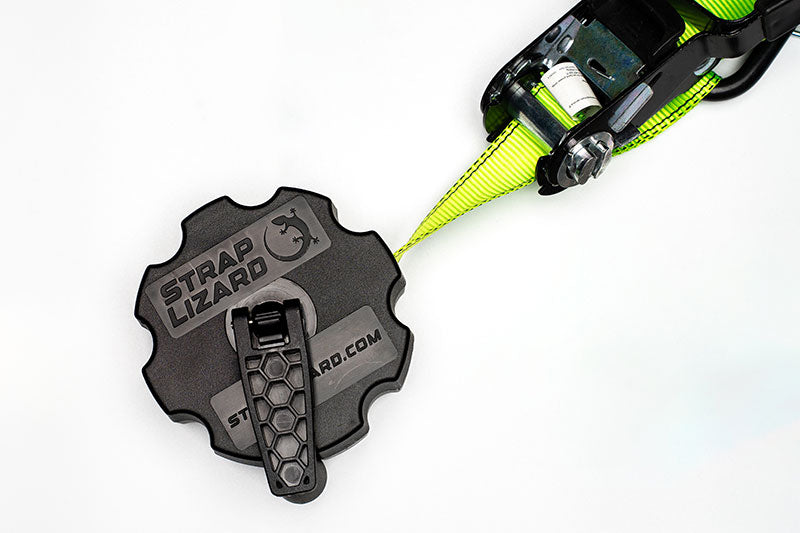Understanding Ratchet Straps and Their Importance
Ratchet straps are an essential tool in countless professions including tradesmen, contractors, and movers, as well as in many hobbies like OHV riding, kayaking, motocross, etc. They provide a secure and reliable way to tie down and secure loads during transit. These straps are known for their ratcheting mechanisms, which ensure that loads remain securely fastened during transportation. Effective strap management is crucial to ensure both safety on the road and efficiency when loading and unloading.
The Basic Functionality of Ratchet Straps
Ratchet straps work on a simple yet effective mechanism. They consist of a webbing material with a ratchet attached, and then a hook on each end. The webbing is typically made from durable polyester material that offers high break strength and a reliable working load limit.
To secure the load, the flat hook or S-hook end fittings are attached to anchor points on the truck bed or trailer. The webbing is then threaded through the ratchet mechanism and tightened by cranking the handle. The ratchet mechanism locks the webbing in place, providing a tight and secure hold on the load.
Ratchet straps are versatile and can be used for a wide range of applications. The flat hooks and S-hooks allow for easy attachment to anchor points, making them suitable for securing all different types of cargo.
Why Proper Strap Management Matters
Proper strap management is essential to ensure the safety and security of the load during transportation. It involves correctly securing the straps, managing excess strap length, and ensuring the straps are in good condition.
One of the key reasons why proper strap management matters is to prevent any surprises that could result in the load shifting or falling off the truck bed or trailer. By securely tying down the cargo and managing the excess strap length, you can minimize the risk of accidents or damage to the load.
Additionally, proper strap management ensures that the straps are in good condition and free from any defects or wear and tear. This is crucial for maintaining the integrity and strength of the straps. Using high-quality straps and regularly inspecting them for any signs of damage or wear will help ensure that they will perform effectively and safely, but recent innovations have provided new ways to manage ratchet straps more efficiently and in ways that can help prevent damage in the first place.




